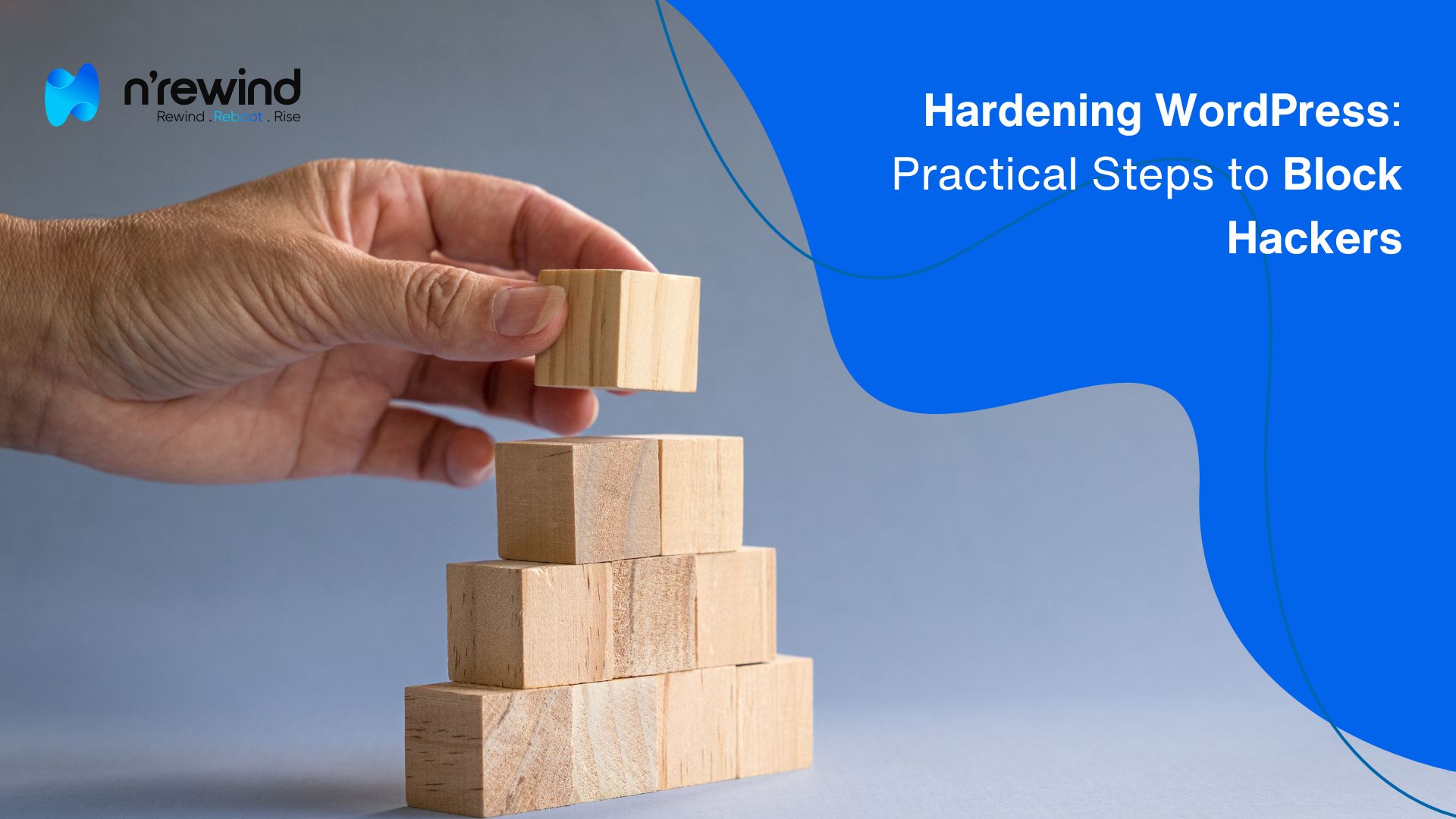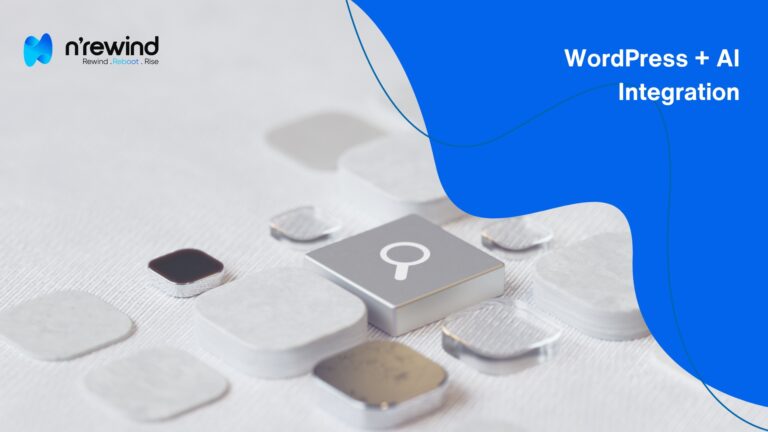WordPress powers over 40% of the web, making it a prime target for hackers. While its flexibility is unmatched, that popularity means vulnerabilities are always being probed. The good news? With the right hardening steps, you can make your WordPress site far more secure.
Whether you manage a blog, a business website, or an eCommerce store, NRewind Technologies helps you implement practical security measures to keep threats at bay.
1. Keep Core, Themes, and Plugins Updated
Outdated software is the most common entry point for hackers.
- Enable automatic updates for minor releases.
- Update plugins and themes regularly, removing ones you don’t use.
- Use reputable sources like the WordPress.org repository.
Our WordPress web development services include ongoing maintenance to keep your site secure and up-to-date.
2. Use Strong Authentication
- Enforce strong passwords for all users.
- Enable two-factor authentication (2FA) for admin accounts.
- Limit login attempts to prevent brute-force attacks.
3. Limit User Access & Permissions
Not every user needs full administrative rights.
- Assign the least privilege necessary for their role.
- Audit user accounts regularly and remove inactive ones.
4. Secure Your Login Page
- Change the default
/wp-adminor/wp-login.phpURL. - Add CAPTCHA to block automated bots.
- Use IP whitelisting for admin areas if possible.
5. Harden File Permissions
Set restrictive file permissions on your server:
wp-config.phpshould be 400 or 440.- Directories should be 755 and files 644.
6. Install a Web Application Firewall (WAF)
A firewall acts as a barrier between your site and malicious traffic.
- Cloud-based options like Cloudflare or Sucuri are effective.
- On-site firewalls like Wordfence offer deep scanning and blocking.
7. Backup Regularly
- Use plugins like UpdraftPlus or BlogVault.
- Store backups off-site (e.g., cloud storage or secure external server).
- Test restoration regularly.
We also provide WooCommerce optimization tips that go hand-in-hand with security, ensuring speed and stability after a restore.
8. Monitor & Scan for Malware
- Schedule regular malware scans.
- Monitor file changes for suspicious activity.
- Review security logs frequently.
9. Optimize for Speed & Security
Security doesn’t have to come at the cost of performance.
- Use a CDN to improve load times and filter malicious requests.
- Optimize images for WordPress without losing quality to reduce load strain on your hosting.
Conclusion
Hardening WordPress is about layering multiple defenses to make it as difficult as possible for attackers to succeed. From updates and firewalls to backups and monitoring, each step adds another layer of protection.
If you want expert hands to lock down your website, contact NRewind Technologies today. We’ll secure your WordPress installation against hackers and ensure your business stays online and safe.
"Protect your WordPress site from hackers with proven hardening techniques. Learn how to block attacks, secure logins, and prevent vulnerabilities. Keep your website fast, safe, and online with expert guidance from NRewind Technologies."




